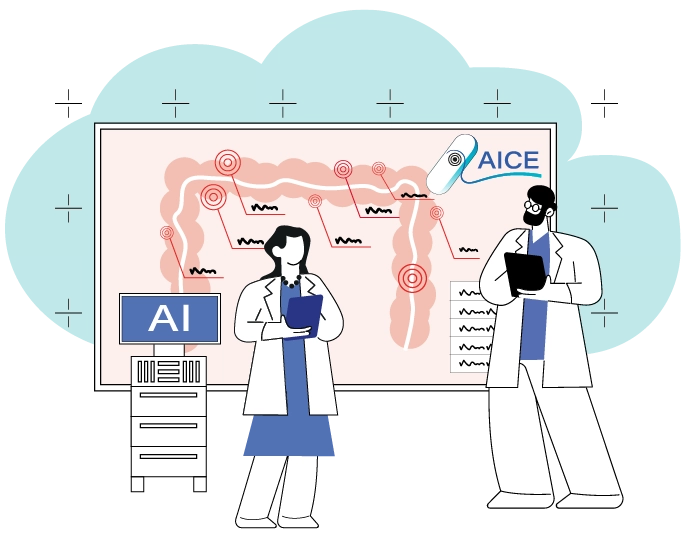AICE is a four-year project running from September 2022 to August 2026. This project has received funding from Horizon Europe (grant agreement no. 101057400).
Why AICE
Millions of Europeans undergo optical colonoscopy (OC) every year. OC is often associated with discomfort, complications, and sick days, which affect patient acceptability, and is a heavy burden on the capacity levels of European hospitals. CCE is a new innovative technology with the potential to replace up to 75% of all OCs. Importantly, CCE has been shown to be preferred by patients, has a lower complication rate, and can be performed out of hospital. As such, this has huge potential for both patients and hospitals. However, the diagnostic process of CCE includes a time-consuming manual reading done by trained personnel and is expensive and prone to human error. We aim to resolve these challenges by incorporating AI into the patient pathway and give patients an alternative to OC.
Our Vision
We envision a world where AI is utilised to create high-quality, patient-centred care. AICE will give patients a choice. Rather than going through an invasive, unpleasant, and sometimes hazardous procedure like traditional OC, CCE empowers patients to make informed decisions about their health and be treated at home.
Our Mission
To simplify the way we detect colon cancer via an AI-assisted patient pathway.
Our Objectives
- To externally validate AIA (Artificial Intelligence based Algorithms) for future implementation of large-scale routine diagnostics in picture analysis.
- To develop a flexible and secure system for data storage and handling, to ensure fast and effective diagnostics.
- To develop a complete patient pathway that enables high-quality diagnostics, which considers patient preferences and ethical and economic considerations.
- To promote the integration of AIA into clinical practice by producing European guidelines and upscaling by making attractive and sustainable business cases.
To achieve these objectives, AICE will use an unprecedented large and diverse collection of existing patient data from nation-wide clinical studies and will include extensive initiatives in the fields of ethics, communication, and patient engagement.



